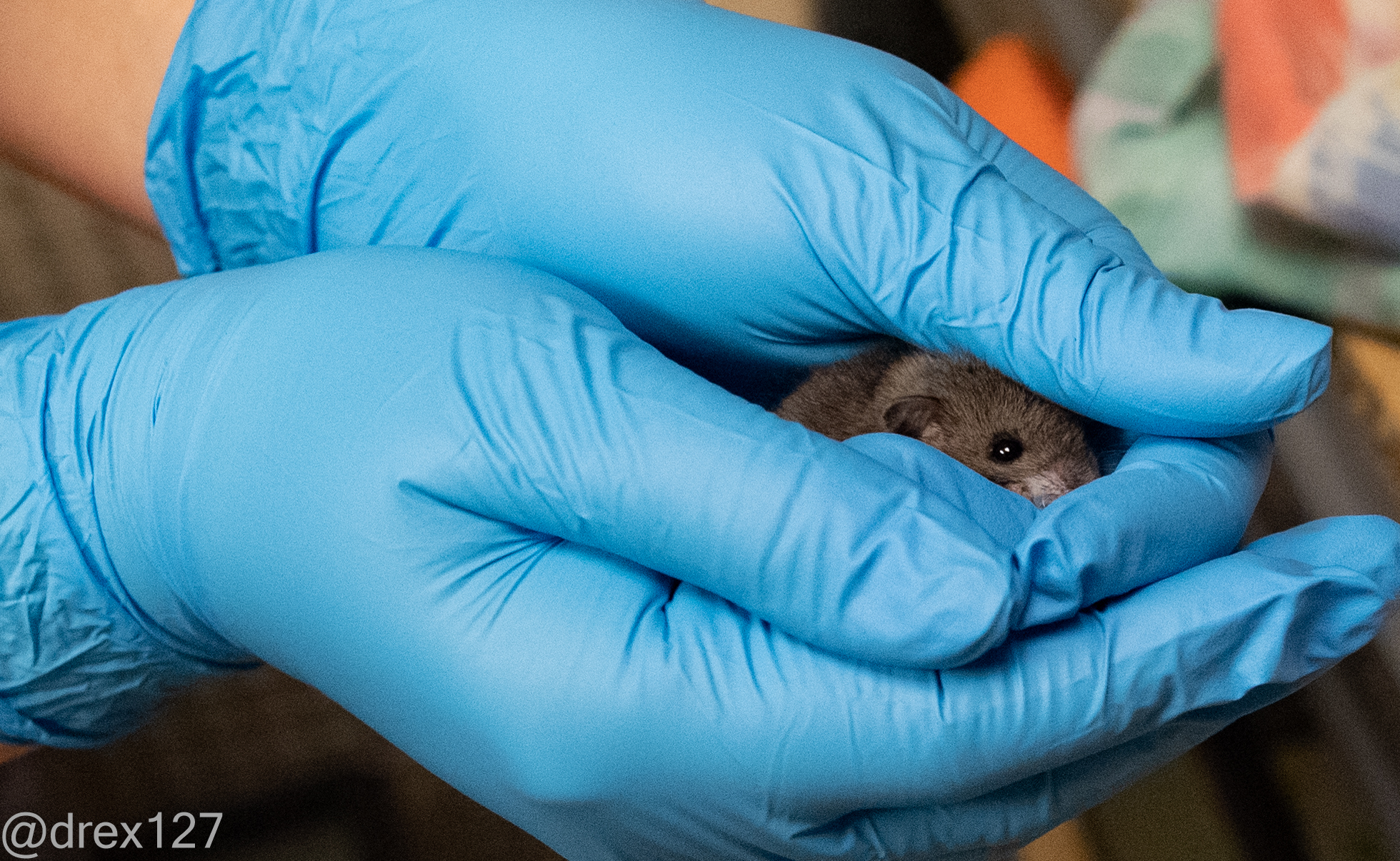Humane Mouse Control
CLICK HERE for a print-friendly PDF and photos!
Situation:
You've seen mice or signs of their presence - such as droppings or chewed food containers - in your home.
Why this happens:
House Mice (Mus musculus) are commensal animals. "Commensal" literally means "at the same table." This means they rely heavily on humans, human-made structures, and human food supplies for survival. House mice are not native to North America; they came to this continent as stowaways on immigrant ships coming here from Europe.
House Mice aren't the only mouse species that get into people's homes. In Wisconsin, native Deer Mice (Peromyscus maniculatus) and White-Footed Mice (Peromyscus leucopus) may also enter structures, though they tend to keep to less-developed areas adjacent to woods and fields rather than in big cities. These native species are usually a bit larger than House Mice, and they generally appear more brownish and have larger, bulging eyes. These mice are less likely to raid the pantry for human food sources; rather, they tend to spend their time in areas of the home with the least amount of human activity, like the attic, wall cavities, and low-traffic areas of the basement.
FAQs & Humane Solutions:
"I've seen mice in my house. They are getting into my cupboards and eating my food and their poop is all over the place. What can I do?"
There are three components to a humane and successful household mouse control program: Exclude, Secure, and Evict.
- Exclude: For long-term success, you need to exclude mice from getting into your house. Go outside and walk around your house, looking for holes or cracks in the outside walls, especially in the foundation. Pay special attention to where pipes or wires-such as those for central air-conditioning or sump pumps-pass through the walls. Go into the basement in the daytime and turn the basement lights off. Look near the top of the basement wall for any light coming in. Close any holes larger than 1/4 inch with hardware cloth or fill with steel wool and sealant. You can use sheet metal to close gaps as well. You could also hire a humane wildlife control company to close off all active and potential entry points around your home. Make sure to verify that they do not use rodenticide (poison) and that the eviction process includes installing one-way doors at entry points to make sure that mice do not get trapped inside.
- Secure: Investigate all potential food sources for mice in your home. This includes items stored in the pantry, basement, garage, as well as dirty stove tops, spilled pet food, or grills. Secure all food in metal or glass containers with tight-fitting lids. This includes pet food, human foodstuffs, bird seed, and grass seed. Clean up any spilled food right away. Remember, mice are small, so leaving one kibble of spilled dog food for a mouse to find would be like leaving a basketball-sized chunk of food for a human.
- Evict: With mouse entries and exits now closed or with one-way doors installed and potential mouse food supplies contained in mouse-proof containers, your final step is to evict the mice that you still have in your house. For this, we recommend the Victor Tin Cat humane mouse live-trap, available here. Bear in mind that given their commensal nature, any mice you evict will likely enter another non-mouse-secured structure in order to survive.
Live-Trapping Technique: For best results, place the live traps against walls (mice like to travel along walls for safety and security) close to where you have seen mice or evidence of their presence. Bait the live traps with peanut butter and/or seeds, shelled nuts, bread, bits of chocolate, or dry dog or cat food. Mice can be fickle; most will readily go for peanut butter, but others can be fussier about their food choices. Also place a small jar lid full of fresh drinking water for the mouse/mice in the live trap. Once they are set, it is important that you to check these traps often, at least every 8 hours, and liberate any trapped mice outdoors as soon as possible.
Keep trapping until you no longer catch mice. If you suspect that you still have mice in the house but they are ignoring the traps, try changing the type of bait you are using, or stop trapping for a few days and then start up again. It can also help to change the locations of your traps every few days.
"Where should I release the mice I catch?"
Because House Mice are commensal animals, we recommend releasing your uninvited guests near your home since they are familiar with the resources around your dwelling. But make no mistake, when you remove the mice from your home and release them, they will not suddenly become "field mice" and live from then-on in the woods and fields-they will sooner or later enter another human-made structure near the release site. But, if you have done a good job of exclusion, they won't be able to get back into your house.
For humane reasons, please do not evict mice during severe weather, such as storms or periods of deep snow or bitter cold. If you have any questions, you may call the WHS Wildlife Rehabilitation Center at (414) 431-6204.
Note: Please DO NOT use glue traps or 'sticky' traps! These traps are very inhumane. They leave an animal to die of dehydration, starvation or exhaustion as it struggles for hours or even days to escape the glue. Some animals will break their legs or even chew off limbs in an effort to escape.


.png)

